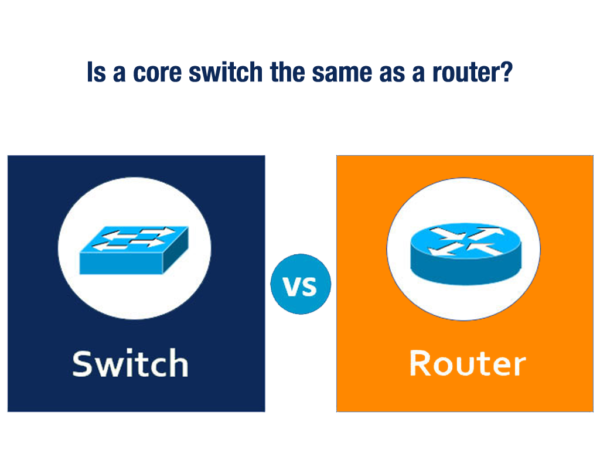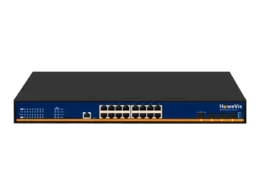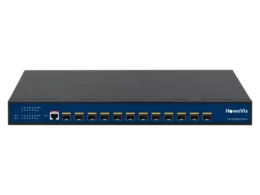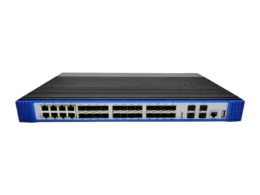The core switch performs as a router and bridges the devices. Usually, people are confused about buying a core switch and a router. Why need a router when you have a core switch in your network? You have your router along with it.
In the network, there are computers, switches, and routers. It is only applicable to the networks having no layer 3 switches. What does a switch do? Connect more devices. It is valid for layer 2 Ethernet switches. Some switches offer two features, such as layer 3 switches.
- Connect the devices and enable the transfer of data packets
- Perform routine functions for safe traffic
Today, we are having a detailed discussion about the routing aspects of the core switch.
What is a core switch?
A core switch is the network’s backbone, connecting the devices and routing data packets. We also call it a gateway for the wide-area network (WAN). THE CORE SWITCH SUPPORTS THE SYSTEM, enabling WAN and securing our data connection by security protocols.
Since the core switch is a high-capacity switch, it plays a central role in the network. Simply, it procures high-power and high-speed data connections to make 100GBs per second possible. Great, right?
How many layers of switches are there in a network?
You might be thinking about layers of the network. You know why? Because you need to know which layer is the core switch and how it is a backbone. Just assume from the name. What do you think it will be? What comes to my mind is a central or core layer. That’s true as well. However, a complex network has three layers of switches.
- Core layer— central one or base layer
- Distribution layer — middle layer
- Access layer— the outermost layer
The switches in the respective layers are core, distribution, and access switches. All these switches are usually Ethernet and have different features.
Which type of switch is the core switch?
There are two types of layer switches.
- Layer 2
- Layer 3
Layer 2 offers only device bridging. It does not have routing functions and cannot monitor traffic. It is a plug-and-play switch.
Layer 3 is more advanced in every aspect. For example, it monitors traffic, improves performance, and provides a better solution for your network. Isn’t that great?
If you understand the above discussion, can you guess the core switch? Will it be layer 2 or layer 3? It is Layer 3.
How does a core switch work?
In the network, the core, distribution, and access switches connect. The core switches simplify complex networks and enable the WAN over the data connection. That means you can easily understand the number of connections for each device and switch. Unlike complex networks, bringing any change to your switch will be easier. So, here is the exact mechanism for the core switch functionality.
- A core switch receives the data packets, performs intelligence functions, and determines the routes.
- Over the destination IP address, the core switch transfers the data packets.
- Integrating with the distribution switches makes creating a Wide Area Network(WAN) easy.
Is the core switch a router?
Yes. A core switch is not only a switch but also a router. Do you know what a router does? Maybe yes, especially if you have a WiFi connection at your home. There is no wire in WiFi routers, while the scenario is a bit different in the case of the core switch. As an Ethernet switch, the Core switch employs an Ethernet wire.
As a router, the core switch works as follows.
- The host device sends the emails or files to the destination file. Emails are in the form of data packets.
- A core switch receives the data packets, defines their route, and passes them through routing protocols like this Enhanced Interior Gateway Routing Protocol (EIGRP).
- The data packets are then sent to the destination IP address once the core switch defines its route.
Do I need a router or core switch?
The answer is not straightforward when choosing between the router and the switch. It depends on your network. For example, why need a core switch if you are using routers in the network? But, again, it depends on whether your network contains multiple switches.
Therefore, if you have a complex network, you should use the core switches to simplify it. You should employ a core switch in a complex network while using the routers in a simple network.
Why should I use the core switch in the network?
The core switch has numerous advantages in the network. Here are some to focus on.
The core switch bridges devices and performs routing.
- One switch, two functions. In simple words, you can say it—two in one switch. A core switch is your switch and a router. That means you don’t have to worry about the routers when you have a core switch as the backbone of your network. Moreover, it saves costs by preventing you from using the routers.
It improves the performance of the network.
- The ultimate function of the router is to improve performance. Yes, you are right, but you must know it in detail. A core switch enables high performance by defining the routes of data packets. Not only is defining routes sufficient, but traffic monitoring is essential to improving performance. The core switch decreases traffic and smoothens the whole process. Incredible performance!
You can enjoy a high-speed data connection of up to 100GBs per second.
- In the 1990s, it was a dream to get a 1MBps speed. But now, can you imagine a data speed up to 100 GB per second? Such a speed can transfer heavy files within milliseconds over the data network. For data-intensive units, this is an excellent achievement for Ethernet switches. Go on. Employ the core switch and get the maximum speed for your data management.
The core switch supports other switches and simplifies the network.
- Core switches are the backbone of the network. That’s why they are high-capacity switches supporting 100GBs of speed per second. You can observe more connections in a complex network without a core switch. Each switch has a connection with others. That’s not right away, as it badly impacts the network’s performance. The number of switches and connections decreases when there is a core switch—no bad impact on performance. Performance increases. Do you have a solution for the network complexity problem? Marvelous!








